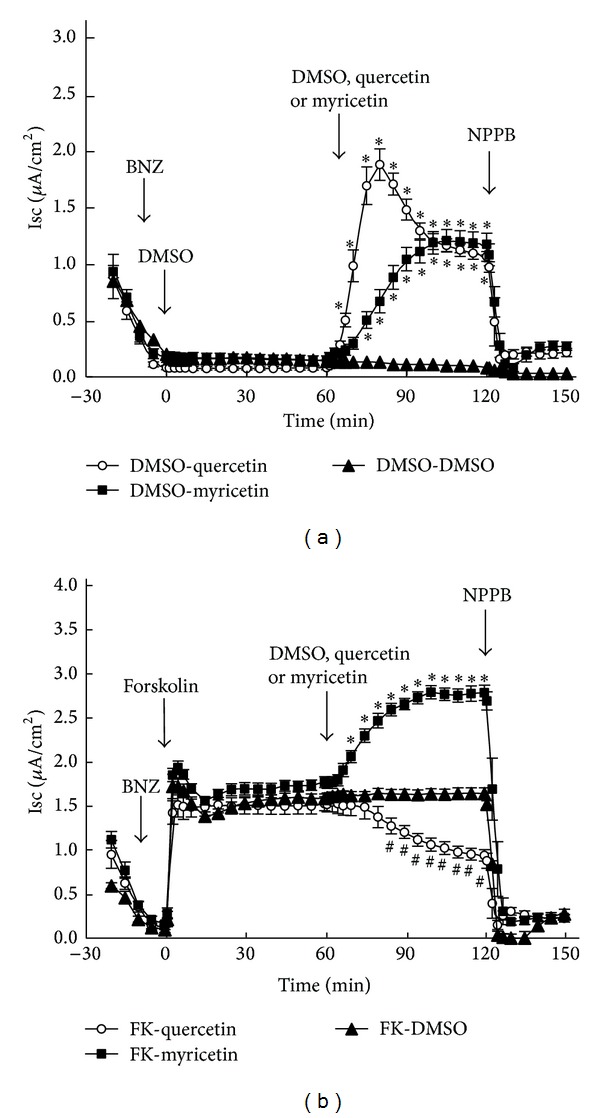Figure 2.

Effects of quercetin and myricetin on Isc under basal (a) and forskolin-stimulated conditions (b). (a) Benzamil (BNZ, a blocker of epithelial Na+ channel: ENaC; 10 μM) was applied to the apical solution at −10 min. DMSO (dimethyl sulfoxide; a solvent for forskolin; 0.1% as the final concentration in Isc measuring solutions) was added to both apical and basolateral solutions at 0 min (open circles, closed squares, and closed triangles). Quercetin (100 μM; open circles), myricetin (100 μM; closed squares), or DMSO (a solvent for quercetin and myricetin; 0.1%; closed triangles) was applied to both apical and basolateral solutions at 60 min. NPPB (a nonspecific blocker of Cl− channels; 100 μM) was applied to the apical solution at 120 min (open circles, closed squares, and closed triangles). n = 5 for DMSO, n = 6 for quercetin, and n = 7 for myricetin. (b) Benzamil (BNZ, 10 μM) was applied to the apical solution at −10 min. Forskolin (10 μM) was added to both apical and basolateral solutions at 0 min (open circles, closed squares, and closed triangles). Quercetin (100 μM; open circles), myricetin (100 μM; closed squares), or DMSO (a solvent for quercetin and myricetin; 0.1%; closed triangles) was applied to both apical and basolateral solutions at 60 min. NPPB (100 μM) was applied to the apical solution at 120 min (open circles, closed squares and closed triangles). n = 6 for DMSO, n = 5 for quercetin, and n = 8 for myricetin. The values marked with ∗ (open circles and closed squares) are significantly larger than DMSO (closed triangles; P < 0.05). The values marked with # (closed squares) are significantly smaller than DMSO (closed triangles; P < 0.05).
